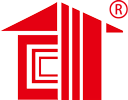Lida Group China Prefabricated House Supplier | One-stop Solution for Modular House, Container House!  Marketing@lidajituan.com
Marketing@lidajituan.com
The Evolution of Prefabricated Houses: Adapting to Modern Lifestyles
Introduction:
In recent years, prefabricated houses have been gaining significant popularity as a modern and innovative solution to the housing crisis. These houses, also known as modular or factory-built homes, have come a long way since their inception. The evolution of prefabricated houses has revolutionized the way we think about home construction and design. With advancements in technology and a shift towards sustainable living, prefabricated houses have adapted to modern lifestyles, catering to the needs and preferences of homeowners across the globe. This article explores the fascinating journey of prefabricated houses and how they have surpassed conventional housing to become the perfect choice for the future.
The Beginning of a Revolution: Pioneering Prefabricated Homes
The concept of prefabricated houses traces back to the early 20th century when architects and engineers sought ways to streamline construction processes and provide affordable housing options. The first prefabricated houses were simple and basic, built with standardized components that could be easily transported and assembled on-site. These early pioneers of prefabricated homes laid the foundation for the industry we see today.
Over time, architects and designers started experimenting and pushing the boundaries of prefabrication, introducing innovative materials and design elements. With increased efficiency in production and improved architectural aesthetics, prefabricated houses began to gain recognition as more than just temporary or emergency housing solutions.
The Rise of Customization: Tailoring Prefabricated Homes to Individuals
One of the major challenges early prefab homes faced was the perception that they lacked customization options. However, as the industry progressed, customization became a key focus for manufacturers and designers. Today, prefabricated houses offer an extensive range of design options and flexibility to cater to individuals' unique tastes and requirements.
Manufacturers now utilize computer-aided design (CAD) software, allowing homeowners to visualize their dream homes before construction even begins. This technology enables customization down to the smallest details, from room layouts and finishes to the selection of fixtures and fittings. With the ability to personalize their homes, individuals can now have the best of both worlds - a modern, efficient construction method combined with a tailor-made living space.
Sustainability at the Core: Eco-Friendly Prefabricated Homes
As global concerns over climate change and environmental impact continue to escalate, sustainability has gained immense importance in the construction industry. Prefabricated houses have swiftly adapted to this demand, and many manufacturers now prioritize eco-friendly practices and materials.
Modern prefab homes are built using sustainable materials such as recycled steel, engineered wood, and energy-efficient insulation. In addition, the controlled factory environment allows for reduced waste, efficient energy consumption, and optimized construction processes. These measures not only reduce the carbon footprint but also contribute to healthier and more energy-efficient homes for the occupants.
Integration of Technology: Smart Features in Prefabricated Homes
In today's digital age, the integration of technology has become a norm in our daily lives. Similarly, prefabricated houses have embraced this technological revolution to offer homeowners a seamless and convenient living experience. Smart features have become increasingly common in modern prefab homes, enhancing comfort, security, and energy efficiency.
From programmable thermostats and automated lighting systems to voice-controlled appliances and remote access security systems, these smart features can be integrated into the design and construction process of prefabricated houses. This level of connectivity and automation not only adds convenience but also allows homeowners to monitor and control their homes remotely, saving both time and energy.
A Sustainable Future: The Advantages of Prefabricated Homes
In conclusion, the evolution of prefabricated houses has surpassed conventional housing methods, adapting to modern lifestyles and catering to individuals' needs. The journey of prefab homes started with standardization, eventually moving towards customization, sustainability, and even smart technology integration. With advancements in architectural design and fabrication techniques, these prefab homes now offer eco-friendly, energy-efficient, and personalized living spaces.
Prefabricated houses have proven to be a viable solution to many societal challenges, such as affordable housing, urban density, and minimizing construction waste. As the world continues to face a growing demand for housing, the adaptability and innovation of prefab homes make them a promising option for the future.
Whether it's a compact house for urban living or a sprawling countryside retreat, prefabricated homes offer endless possibilities. With a harmonious blend of sustainability, technology, and customized design, these homes truly represent the future of modern living. Experience the evolution of prefabricated houses and embark on a journey of innovation, efficiency, and comfort.
In today's world, have risen to an unexpected level of flat pack homes. It has gained a lot of popularity and has come up with different kinds of variations in its content.
Check out Lida Group for optimal quality products, and get your prefab houses problem fixed. Send us an enquiry or make a call if you are interested.
Lida Group will need to find one that fits our needs and budgets, and still turns out a quality product.
We welcome you to contact us for more information of
prefab house and look forward to working with you !
About Lida Group
CONTACT Lida Group Container House Supplier
Tel: +86-532-88966982 88965892
Whatapp/Wechat: +86-13793209022
Email: Marketing@lidajituan.com
Website: Prefabricated House Supplier/ Container House China / China Prefabricated House
Head Office: 5th Floor, Building A, Darron Center,No.180,Haier Road, Qingdao, 266000,China

Lida Group
Tel: +86-532-88966982 88965892
Whatapp/Wechat: +86-13793209022
Email: Marketing@lidajituan.com
Website: Prefabricated House Supplier/ Container House China / China Prefabricated House
Head Office: 5th Floor, Building A, Darron Center,No.180,Haier Road, Qingdao, 266000,China



